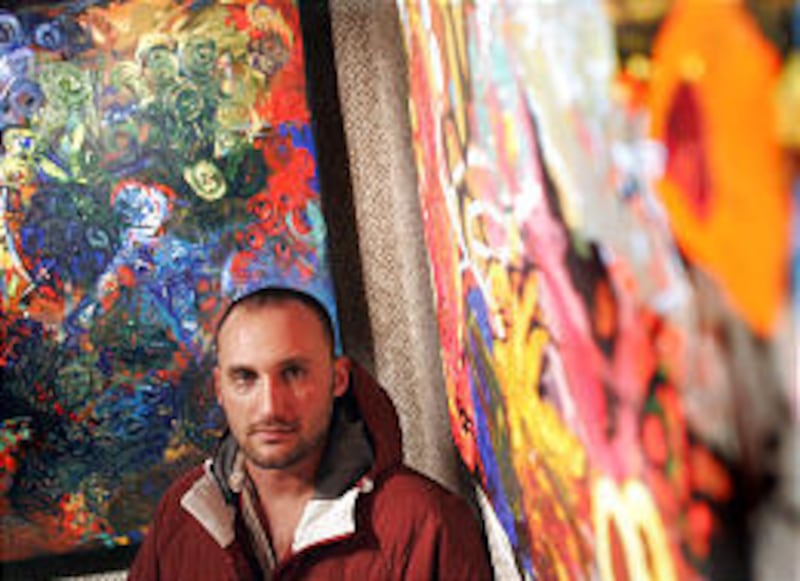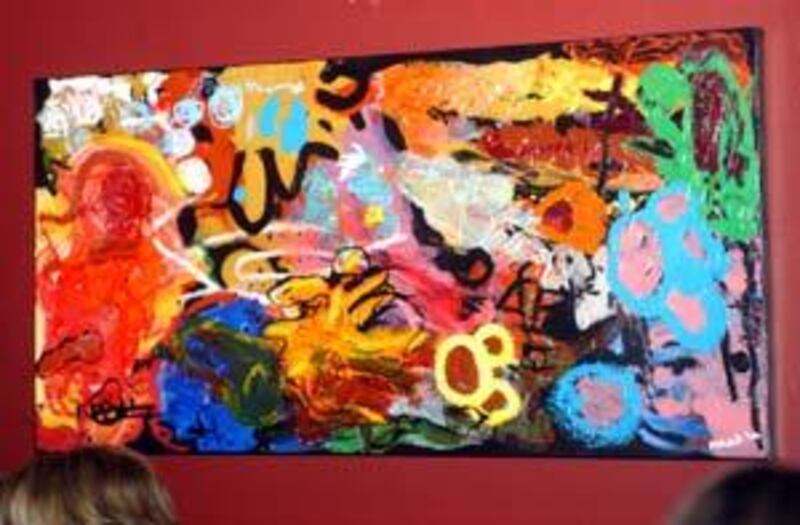You have either thought it, said it or heard it said about abstract art. "My Kid Could Paint That" is not only the reaction of many to swatches of color and composition on canvas, it is the name of a documentary film that explores so much more than just art.
At the center of the film is then four-year-old Marla Olmstead, an artist of great talent and fame — or a pawn of clever fraud that took hundreds of thousands of dollars from the art community and snookered the media and dealers and critics around the globe. Telling the story of Marla's meteoric rise in the art world, and the shocking accusations that blind-sided her family, is filmmaker Amir Bar-Lev.
He spoke with the Deseret Morning News about his film, himself and the family of four that drives his documentary, which was just purchased by Sony Pictures Classics and is probably coming to a theater near you.
"It is not a film about Marla," he said, speaking carefully in one of the first media interviews about his thought-provoking documentary. "It is a film about all of our different ideas, adult's ideas, of who she is."
The story starts innocently enough. Marla took some oil paints her father was using and produced a remarkable work of abstract art. Before long her works attracted strong attention while hanging in a local restaurant and after some media attention, the shy and beautiful child was given a show at a gallery that promptly sold out. Local newspaper reporters caught the story and Bar-Lev began filming the family with a two-person crew, recording the early years of a possibly great child prodigy.
When the New York Times picked up the story, it exploded internationally, shining a bright light on an otherwise normal pre-schooler and what the film depicts as a loving, protective mother and a caring but driven father. The family became a fixture in the media, including network television, but when CBS's "60 Minutes" aired a show with "expert" analysis and hidden-camera evidence of Marla creating a sub-standard painting, the Olmstead's whole world was turned upside down. The market for her painting instantly dried up and her collectors were more than a little alarmed that they may have been victims of fraud.
"I think what I grappled with is when something bad happens to your subjects, it is good for your film."
Bar-Lev, who had been with the family for many months, was on hand with his camera to capture the reversal of fortune the devastated family faced. Complicating matters, the documentarian's own efforts to film Marla creating one of her gallery pieces had met with failure. The filmmaker had his doubts, and his film is a reflection of how he experienced the story as it unfolded.
"I didn't want to be in the film. In this case it seemed more truthful to draw attention to the fact that this is not the 'true' story of the Olmsteads but a representation of them by a fallible storyteller."
The family wanted Bar-Lev to save their reputation and show definitively that Marla was the sole creative force behind her works, but either the girl was too shy to produce the works with anybody other than her parents around or she was receiving help from somebody else.
The documentary doesn't attempt to provide a definitive answer.
"It would have been easier if I found proof, one way or another. I am gratified that different people draw wildly different conclusions. I myself had both conflicting conclusions in my head. Sometimes changing every ten minutes."
The viewer may pick sides but the director wanted "to reflect my own ambivalence and uncertainty."
Some of the experience of the film was painful for the director because he had grown close to the Olmstead family.
"I very much liked them and I still like them," although the relationship is distant but changing all the time.
"It is a very complicated relationship. We are going to be in each other's lives for a long time now." The showing at Sundance and the world-wide distribution of the film ties the filmmaker and the family tighter together.
"I hope the film doesn't impact Marla. One thing I struggled with is that she may not even remember the time when it was all filmed. I wonder if the film — I am not saying it will but I wonder — if it will be a recollection for her."
Marla is still painting and her parents have managed to capture two videos of her creating art from start to finish, the second now available on the family's web site, www.marlaolmstead.com. After her career stalled, the now seven-year-old has regained some of the lost status in the art community.
The Marla Olmstead saga isn't over.
"It is very much still happening," the filmmaker said.
The film was made completely on the hope that it would someday be make it big. Recently A&E Indie Films picked up the North American TV rights, becoming an investor in the film. A&E benefits from the film's theatrical deal and will provide flexibility on how the show is seen on television. But during the making of the film it was most often a two-man operation with partner Stephen Dunn, although they hired help along the way. Only recently has the film been picked up by a larger team to help take it to Sundance and beyond. But despite all his struggles, the filmmaker doesn't think his job was the hardest part.
"They (the Olmsteads) are real people, not movie characters. It has given me way more respect for subjects of documentaries. It is way easier to be on the other side of the camera."


